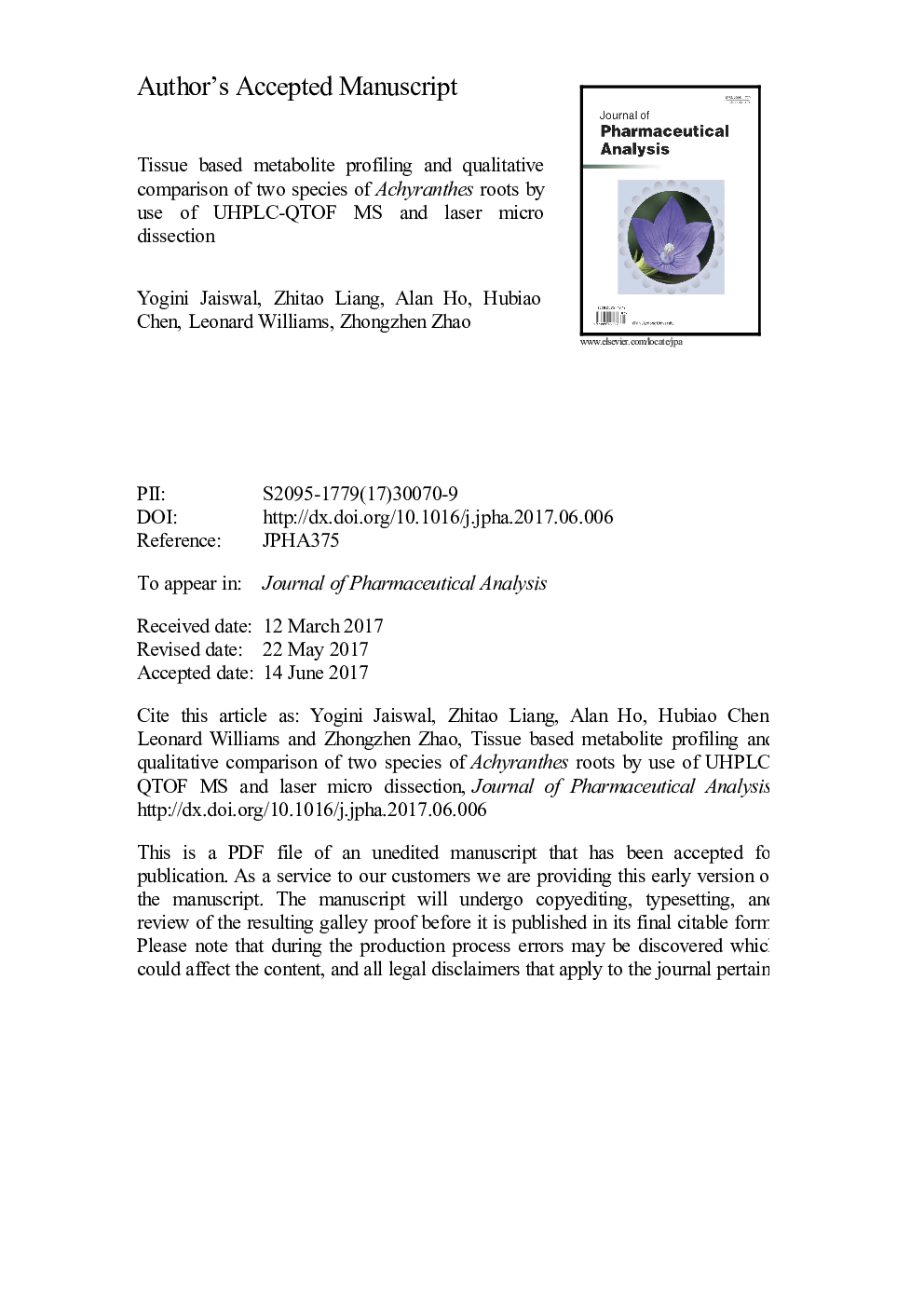| Article ID | Journal | Published Year | Pages | File Type |
|---|---|---|---|---|
| 8521109 | Journal of Pharmaceutical Analysis | 2018 | 26 Pages |
Abstract
Achyranthes bidentata and Achyranthes aspera are saponin and steroid rich medicinal plants, used extensively for therapeutic treatments in Traditional Chinese Medicine (TCM) and Ayurveda. A. bidentata is reported to be one of the rare and extensively exploited medicinal plant species that face the issue of being endangered. Finding qualitative substitute with identical phyto-constituents contributing to similar composition and pharmacological benefits will help in reducing the burden of exploitation of the natural habitats of such plants. In the present study, a comparative metabolite analysis of the whole drug and specific tissues isolated by laser micro-dissection (LMD) was carried out for both the selected species, by use of ultra-high performance liquid chromatography-quadrupole time-of-flight mass spectrometry (UHPLC-QTOF MS). The results of the study indicate that the cortex and the medullary ray tissues are rich in their content of steroidal and saponin constituents such as (25S)-inokosterone-20,22-acetonide, ginsenoside Ro, bidentatoside II and achyranthoside B. Metabolite profiling of the whole tissues of both the species indicates presence of identical constituents. Thus, it is inferred that A. bidentata and A. aspera can be used as qualitative substitutes for each other.
Related Topics
Health Sciences
Pharmacology, Toxicology and Pharmaceutical Science
Pharmaceutical Science
Authors
Yogini Jaiswal, Zhitao Liang, Alan Ho, Hubiao Chen, Leonard Williams, Zhongzhen Zhao,
